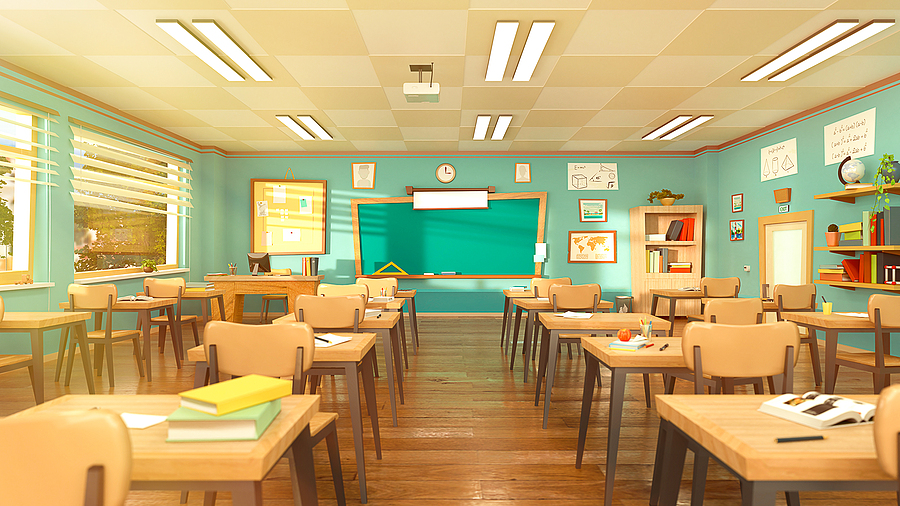Education is an essential element to create awareness and cultivate an understanding of issues prevalent in the environment. Therefore, schools must be sources of inspiration, spaces for creative thinking, and the primary foundation for developing environmental awareness and responsibility.
You can transform a school into an institution where everyone is aware and is responsible for the impact they have in creating an economically, equitably, and environmentally suitable future. We need to give students educational programs to encourage the development of environmentally conscious citizens. Through the following eco-friendly practices in the private school outdoor spaces, students will receive the necessary knowledge to make this future a reality.
Reflect on Nature
Today, most kids are often glued to televisions and game systems, and they rarely appreciate the importance of spending time outside. Come up with various outdoor activities that will help them to be more proactive in environmental issues. Schedule a trip and visit floor decking companies, which deal with eco-friendly decking boards, and let them learn the importance of making greener outdoor furniture. It is a great way to incorporate nature and the green initiative into the curriculum.
Implement Green Cleaning, Pest control, and Maintenance Policies
Replace toxic cleaning supplies, pest poisons, and chemical fertilizers with natural and eco-friendly ones. It is child-friendly movements which will help reduce allergies and protect the environment. The school administration should seek a green solution to these issues by promoting natural weed control methods, eco-friendly cleaning detergents, and natural ice melting solutions during the winter months.
Plant a Garden
Creating an outdoor vegetable or herbal garden is suitable for student’s experiential learning. The gardens are beneficial to students; when they grow food and native plants, they learn how to connect with the outside world to understand the food chain for sustainable agriculture. Most students love hands-on activities; planting a garden is an exciting way to address various academic topics as you add value to the planet. These plants purify the air by removing bothersome substances.
Set up a Green Students club
If your school doesn’t have an environmental club, think about creating one, and allow the students to run it; this is the first step to help your school in adopting the green initiative. The club brings together various open-minded students who care about preserving the environment and will help in teaching the entire school on environmental sustainability. The club’s objectives include raising funds for the green initiative, organizing clean up and trees planting days, taking part in green schools competition, and growing food in the school’s gardens. The students will also learn leadership skills from the club, teamwork, and how to make a positive difference.
Come up with Recycling Ideas
Sort all the rubbish and put bins in the playground, add an extra tray for plastic bottles to improve and support the recycling practice. Consider the zero–waste practices by discussing various ways in which you can replace disposable food containers and water bottles with reusable ones. Encourage competition among different levels to see which class will significantly reduce their waste output to create a healthy competition, less waste, and a clean environment. Get creative and crafty by turning old things into new ones; check out Pinterest for kid’s recycling ideas.
Form Carpooling, Cycling or Walking Groups
Find more efficient ways to get to and from the school, encourage the pupils to walk; this will reduce the total carbon footprint. Those who reside close enough to the school can form groups to walk or ride a bike to school; this is a green way to start the day as they enjoy exercise and fresh air. Those who reside further from the school can opt for public bus services or carpooling to reduce the rate of emissions in the air.
Go Paperless
The school administration should lead by example; to accomplish the green initiative, it has to start with the teachers. Cut down on the use of papers by keeping electronic copies of the documents instead of printing them, but if you must print something out, then use compostable papers to help you stay green. If your school has access to laptops and projectors, use them to instill a sense of efficient note-taking to your students.
Adopt Compositing
Start a composite pile, which is an environmentally friendly project that connects food waste and nature. It is an excellent method to dispose of organic crap, and you can also use composite as fertilizer for your school gardens. If a composite pile may sound a bit complicated for your schoolyard, you can also choose worm –bins as an alternative.
Introduce Lessons in Living
In most subjects, there is always something to learn about the surroundings, whose mission is to help pupils develop a connection between the environment through class lessons and practicals. Some of the fascinating lessons to bring about environmental concerns in the school include; learning about landfills, rainfall catchment areas protection, and applications of eco-friendly decking boards.
Collect Water
During rainy seasons, help your students to come with rain barrels to correct water, which will be used to water lawns and gardens in the sunny season. Also, you can reuse water used during science projects or used in food preparation; collect it in a basin and use it to water the plants. Water is an essential component while creating green school outdoor spaces; it helps to grow plants that act as natural air purifies. Having plenty of green plants around creates a relaxing environment and lowers stress.
Conclusion
Green living should be a part of every school life by considering environmental protection in everything you do. Get the right floor decking companies to swap the outdoor school floors with eco-friendly ones. When it comes to lunch break snacking, encourage your pupils and staff to consider the use of biodegradable plates and cups, which are more environmentally friendly.
Remember, the upcoming generation will determine the future of this planet; teachers are, therefore, first in line in defence of environmental movements. Regardless of the budget, the above point can help pupils make the world a little greener.
Image Source: BigStock.com (licensed)
Related Categories: Education, Environmental, Reviews








